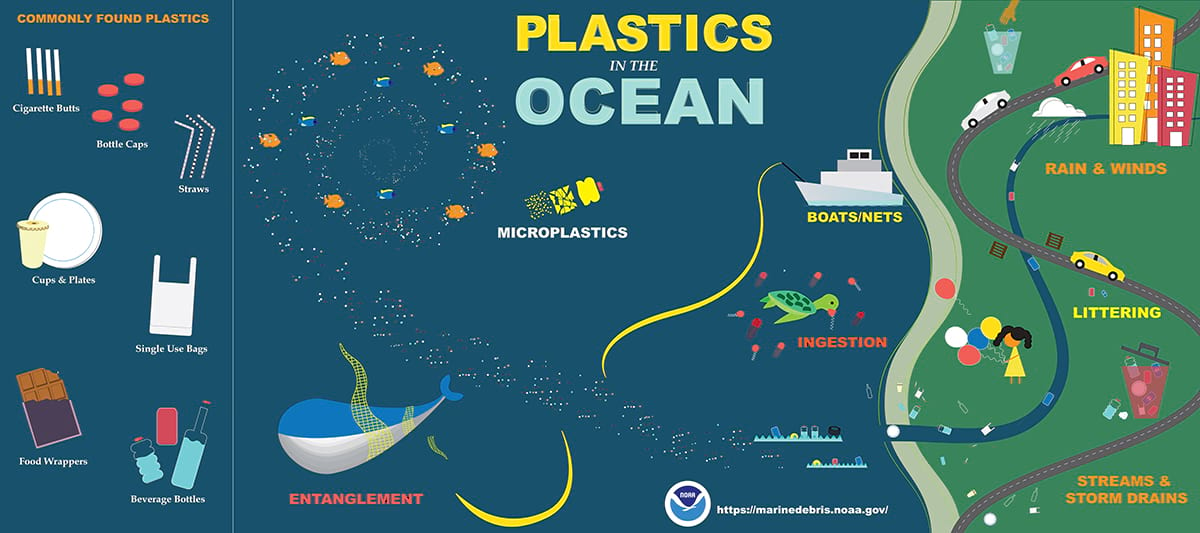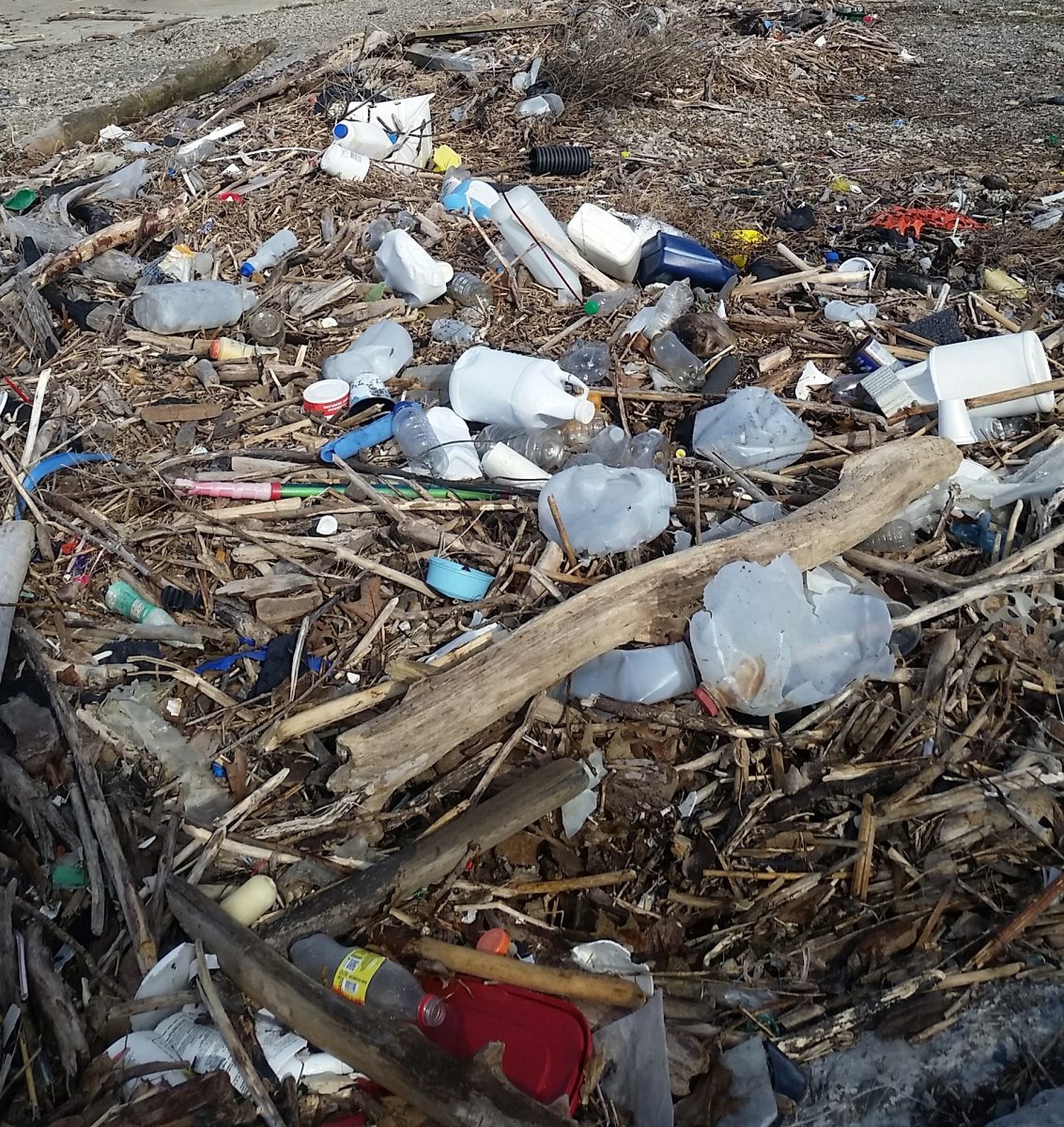
https://www.earthday.org/fact-sheet-plastics-in-the-ocean/
Sources:
Plastic in the Ocean Pollutes “Marine Snow”
https://now.northropgrumman.com/plastic-in-the-ocean-pollutes-marine-snow/
https://oceanservice.noaa.gov/hazards/marinedebris/plastics-in-the-ocean.html

There are many ways to keep plastic out of the ocean! Here are two strategies:
NOAA’s Marine Debris Program (MDP) works to understand how plastics — and other marine debris — get into our ocean, how they can be removed, and how they can be kept from polluting our marine environment in the future.
Plastic pollution is a serious problem for the Great Lakes.
More than 22 million pounds of plastic pollution end up in the Great Lakes every year, according to the Rochester Institute of Technology. And, it never really goes away. Instead, it just breaks down into smaller and smaller pieces known as “microplastics.”

Great Lakes plastic pollution flows out from our shorelines because we leave it there. The good news is that we all have the power to reduce the amount of plastic we use, and thereby limit the amount of plastic that ends up in the Great Lakes. Start by following these tips: